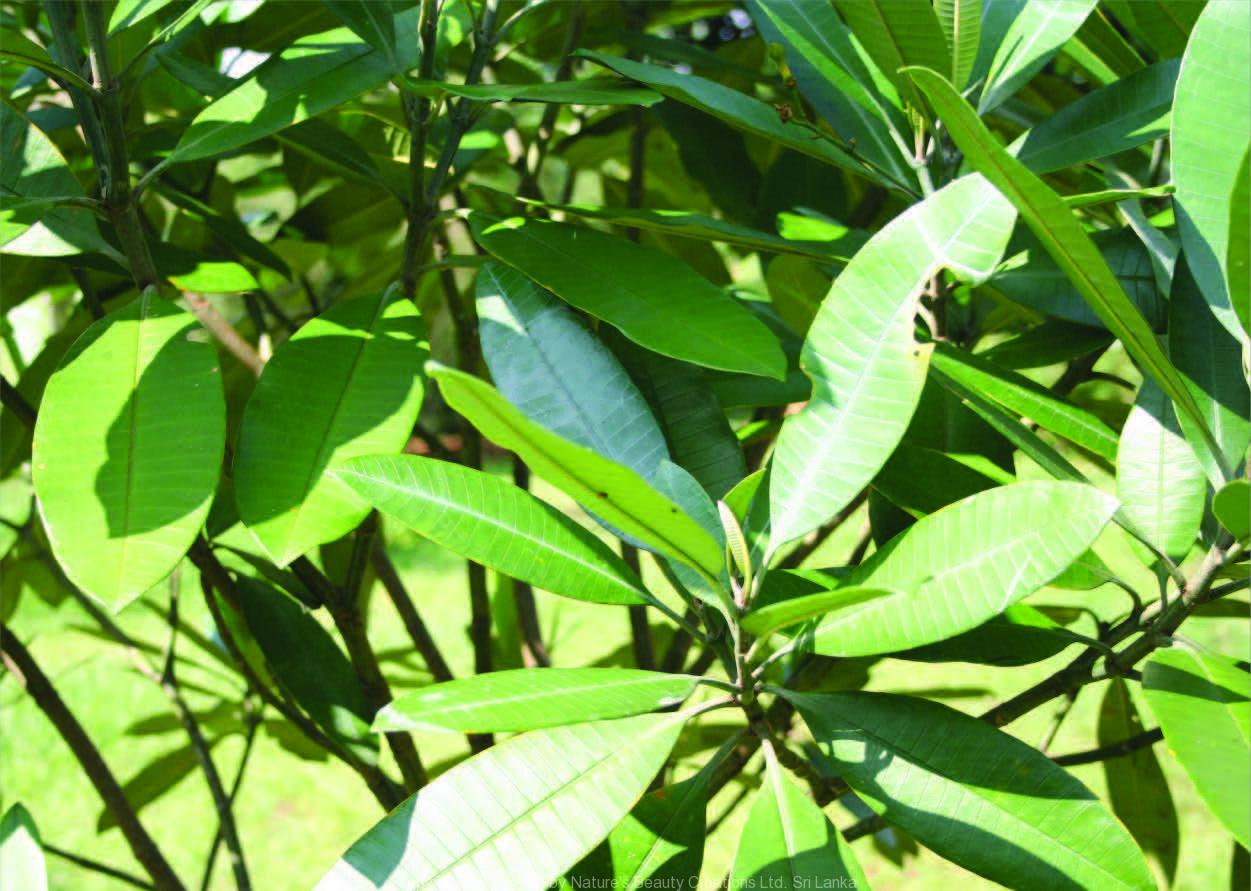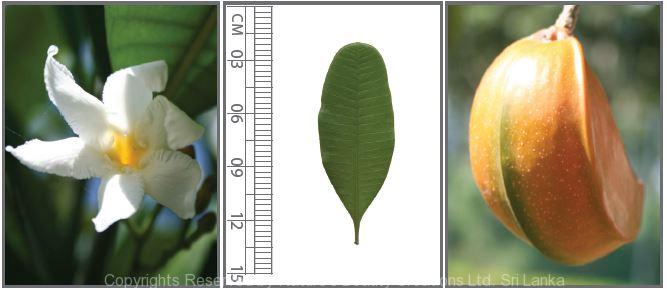

Traditional Knowledge
Useful plant parts :
Seed, root and bark
Uses in traditional medicine :
- Crushed bark and leaves are applied on wounds, snake bites and centipede bites as an antiseptic and used to treat ulcers and fistulae
- Seeds are purgative
- Root juice is used for eye infections and toothache
Scientific Research
Chemical constituents:
Alkaloids: stemmadenine, perivine, vobasine, coronaridine dichomine from seeds and tubotaiwine, apparicine, ibogamine, isomethuenine and derivetives of tabernamine, voacamine, coronaridine, heyneanine, ervahanine and terpene: β-amyrin acetate from plant
Bioactivity :
Stemmadenine: hypotensive and muscle relaxant activity; tubotaiwine and apparicine: affinity for adenosine receptors and in-vivo analgaesic activity; β-amyrin acetate: α-glucosidase inibitor
Clinical:
Caution : Narcotic and poisonous, causes delirium and other symptoms similar to Datura poisoning
References : Ingkaninan, K. et al., (1999), Isolation of Opioid-active Compounds from Tabernaemontana pachysiphon leaves, Journal of Pharmacy and Pharmacology, 51(12), 1441–1446. Perera, P. et al., (1985), Alkaloids of stem and root bark of Tabernaemon- tana dichotoma, Phytochemistry, 24(9), 2097-2104. Perera, P. et al., (1985), Muscle relaxant activity and hypotensive activity of some Tabernaemontana alkaloids, Journal of Ethnopharmacology, 13(2), 165-173. Wijayabandara, M. D. J. et al., (2008), Novel alpha-glucosidase inhibitor from Tabernaemontana dichotoma, US Patent, 0103201.
Copyrights Reserved By
Natures Beauty Creations




